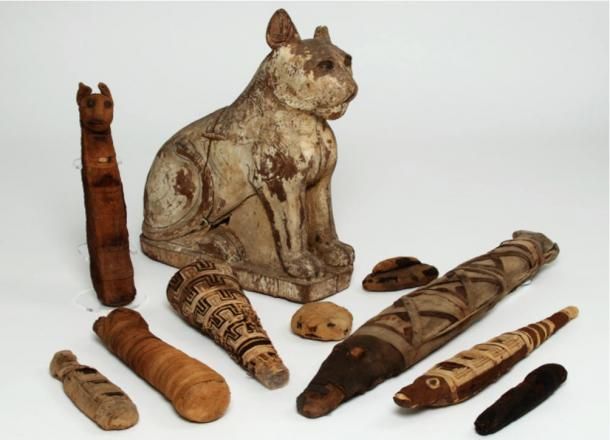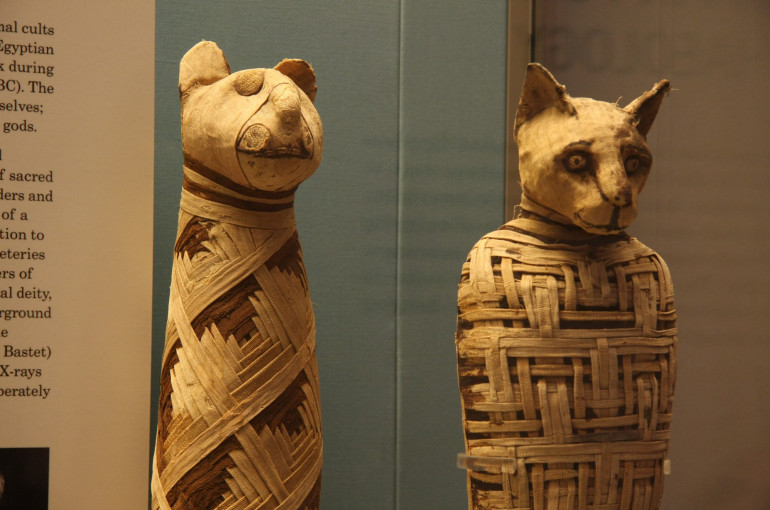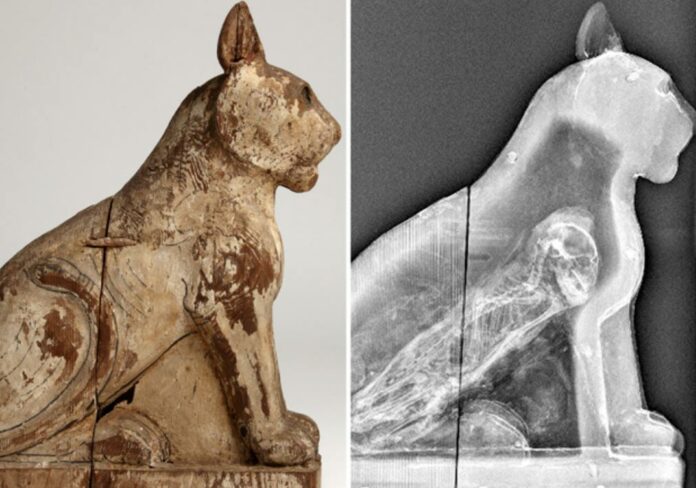In an extraordinary revelation that has brought to light a lesser-known aspect of ancient Egyptian culture, archaeologists have uncovered around 70 million mummified animals in subterranean catacombs across Egypt. Labelled as Egypt’s “dark secret,” the assortment includes diverse species such as cats, birds, rodents, and crocodiles. Notably, ongoing research has unearthed startling facts about these mummies, with a significant number found to be devoid of any animal remains, pointing to intriguing aspects of the ancient animal mummification industry.

The Discovery and Its Implications
In 2015, a collaborative team of radiographers and Egyptologists from the University of Manchester embarked on an unprecedented survey of animal mummies using cutting-edge medical imaging technologies. Featured on the BBC program Horizon: 70 Million Animal Mummies: Egypt’s Dark Secret, this extensive research involved scanning hundreds of intricately-prepared mummies from over thirty different sites across Egypt, making it the largest study of its kind ever conducted.

The advanced imaging techniques, including CT and X-ray scans, were applied to 800 mummies dating from 1000 B.C. to 400 A.D. The results were unexpected: about one-third of these mummies were empty, containing only non-animal materials such as mud, sticks, reeds, and eggshells. These findings have prompted a reevaluation of the motivations and methods behind the extensive animal mummification practices in ancient Egypt.
The Ancient Egyptian Mummification Industry
The ancient Egyptians held various animal deities in high regard, viewing mummified animals as sacred offerings to these gods. Led by Dr. Lidija McKnight, the research team noted that the enormous demand for such mummies and the detailed efforts put into their creation indicate a flourishing industry. McKnight highlighted that these mummies were used by individuals to convey messages to the gods, reflecting the deep religious significance of animal mummification within their culture.

The scale of this industry was immense, with the discovery of about two million mummified ibis birds and up to eight million mummified dogs across several catacombs.
Revealing the Hidden Truth
The detailed scans brought to light some remarkable facts. For instance, a mummified crocodile measuring five feet in length was found to contain eight baby crocodiles, intricately arranged with the mother. Similarly, while some cat mummies had a few cat bones, others held no animal remains at all, instead being filled with materials considered symbolic and significant.
It is believed that the overwhelming demand for mummified animals might have led to the creation of ‘fake’ mummies, allowing embalmers to cater to pilgrims and worshippers while maximizing profits from sales of mummies without the actual promised animal remains. Despite these practices, the intricate preparation of even symbolic mummies underscores their revered status.
Conclusion
The excavation of 70 million mummified animals sheds light on a complex and obscure facet of ancient Egyptian religious practices. These discoveries challenge our previous understanding of the animal mummification industry and provide deep insights into the religious beliefs and rituals of ancient Egyptians. As the BBC program continues to air, it is expected to spark further debate and investigation into this mysterious and captivating chapter of ancient history. These mummified remains serve as valuable historical records, offering insights into ancient techniques and the profound relationship between religion, life, and death in ancient Egypt.



